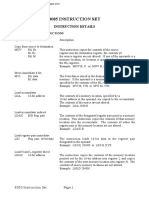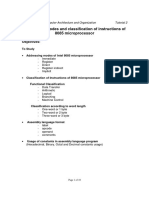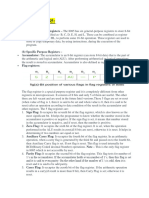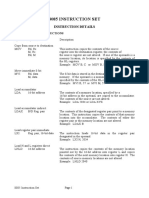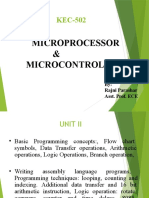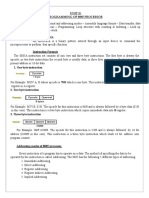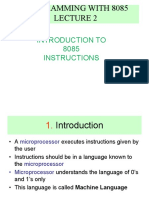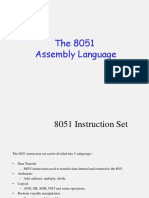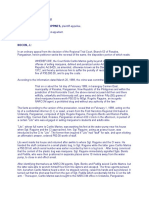0% found this document useful (0 votes)
10 views14 pagesAssembly Language
The document provides an overview of the 8085 microprocessor's architecture, focusing on its registers, flags, addressing modes, and instruction sets. It details the functions of general-purpose registers, flag registers, and various addressing modes, along with examples of data transfer, arithmetic, and logical instructions. Additionally, it explains the significance of flags like Sign, Auxiliary Carry, Parity, and Carry in arithmetic operations.
Uploaded by
solamanmd275Copyright
© © All Rights Reserved
We take content rights seriously. If you suspect this is your content, claim it here.
Available Formats
Download as PDF, TXT or read online on Scribd
0% found this document useful (0 votes)
10 views14 pagesAssembly Language
The document provides an overview of the 8085 microprocessor's architecture, focusing on its registers, flags, addressing modes, and instruction sets. It details the functions of general-purpose registers, flag registers, and various addressing modes, along with examples of data transfer, arithmetic, and logical instructions. Additionally, it explains the significance of flags like Sign, Auxiliary Carry, Parity, and Carry in arithmetic operations.
Uploaded by
solamanmd275Copyright
© © All Rights Reserved
We take content rights seriously. If you suspect this is your content, claim it here.
Available Formats
Download as PDF, TXT or read online on Scribd
/ 14

